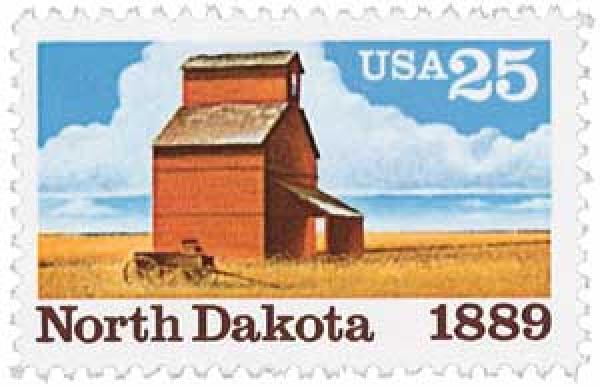The Gilded Age Republican Power Grab: The Gift That Keeps On Giving

We often complain about the unfair Senate and how all the big empty states in the middle of the country give Republicans an inherent advantage that is impossible to overcome. As Heather Cox Richardson reminds us, this was a very intentional play by Republicans in the Gilded Age.
The Republicans had won every presidential election from 1860 to 1876, and controlled both houses of Congress for all but two years of that period, but their governing majority was evaporating. In 1880, after a major Democratic scandal, the Republican James A. Garfield won election by only slightly more than 8,000 votes out of almost 10 million cast, and in 1884, a Democrat, New York’s Grover Cleveland, won the presidency. For Republicans, Cleveland’s election signaled the apocalypse. They had come to believe that the key to American prosperity was the Republican tariff system, which protected American business. Democrats, in contrast, complained that tariffs drove up the price of consumer goods and enabled industrialists to collude to raise prices. Cleveland won by promising to reduce tariff rates. Worse for Republicans, the South had gone solidly Democratic after 1876, and by the time of Cleveland’s victory it was clear it would remain so for the foreseeable future. Not for the last time, Republicans protested that the nation was falling to socialism.
So they changed the political equation. Vowing to regain the White House, Republican leaders first flooded the country with pro-business literature, and then chose the nondescript Ohio Senator Benjamin Harrison, who would toe the line on the tariff, as their nominee for president. Next they tapped a Philadelphia department-store entrepreneur, John Wanamaker, to persuade wealthy industrialists to invest in the Republican war chest, constructing a modern system of campaign finance. Their advertisements and threats that Democrats would destroy the economy enabled Republicans to win control of Congress. Harrison lost the popular vote by about 100,000 votes, but he won the election in the Electoral College. (When Harrison piously declared that “Providence has given us this victory,” his campaign manager scoffed that “Providence hadn’t a damn thing to do with it. [A] number of men were compelled to approach the penitentiary to make him President.”)
In the face of an emerging Democratic majority, Republicans set out to cement their power. The parties had scuffled for years over admission of new states, with Democrats now demanding New Mexico and Montana, and Republicans hoping for Washington and Dakota (which had not yet been divided in two). Before the election, Congress had discussed bringing in all four states together, but as soon as the Republican victory was clear, Democrats realized they had to get the best deal they could or Republicans would simply admit the Republican states and ignore the Democratic ones, as they had done in 1876. So on February 22, 1889, outgoing President Cleveland signed an act dividing the Dakota Territory in half, and permitting the two new territories, along with Montana and Washington, to write constitutions before admission to the union the following year. They passed over New Mexico, which had twice the population of any of the proposed states.
Republicans did not hide their intentions. In the popular Frank Leslie’s Illustrated Newspaper, President Harrison’s son crowed that the Republicans would win all the new states and gain eight more senators, while the states’ new electors meant that Cleveland’s New York would no longer dominate the Electoral College. When the Republicans’ popularity continued to fall nationally, in 1890 Congress added Wyoming and Idaho—whose populations in 1880 were fewer than 21,000 and 33,000 respectively—organizing them so quickly that they bypassed normal procedures and permitted volunteers instead of elected delegates to write Idaho’s constitution.
Democrats objected that Wyoming and Idaho would have four senators and two representatives even though there were fewer people in both together than in some of Massachusetts’s congressional districts, but Harrison’s men insisted that they were statesmen rather than partisans. They accused Democrats of refusing to admit any states that did not support their party—a reversal of the actual record—and claimed Republicans supported “the prosperous and growing communities of the great West.” But moderate Republicans sided with the Democrats, pointing out that the Harrison administration had badly undercut the political power of voters from populous regions, attacking America’s fundamental principle of equal representation.
Harrison’s men didn’t care. “The difference between the parties is as the difference between the light and darkness, day and night,” one supporter argued in Frank Leslie’s. The Republican Party, he insisted, must stay in power to protect Big Business. If that meant shutting more populous territories out of statehood and admitting a few underpopulated western states to enable a minority to exercise political control over the majority of Americans, so be it. Today, the District of Columbia has more residents than at least two other states; Puerto Rico has more than 20. With numbers like that, admitting either or both to the union is less a political power play on the Democrats’ part than the late-19th-century partisan move that still warps American politics.
As usual, when Republicans complain that Democrats doing something is evil or socialism or tyrannical or whatever, it’s just projection because they want to do precisely what they accuse Democrats of doing. That very much includes calls to make Washington DC or Puerto Rico states. Can’t have democracy when your goal is to make democracy impossible. So let’s divide Wyoming into 3 states.


